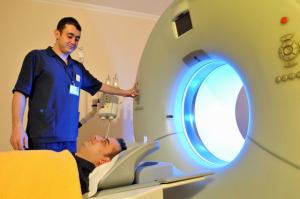by
Lauren Dubinsky, Senior Reporter | November 03, 2014
Physicians usually have to rule out many other conditions to zero-in on a diagnosis for chronic fatigue syndrome (CFS) but researchers at Stanford University School of Medicine have found a way to use different MR techniques to make the diagnosis. The results of the study were published online in the journal Radiology.
The researchers used MR on 15 participants with CFS and 14 healthy participants. They applied three different MR techniques including a volumetric analysis to determine the size of the different sections of the brain, diffusion tensor imaging to evaluate how reliable the signal-carrying white matter tracts of the brain are, and arterial spin labeling to measure blood flow.
They found that the CFS participants had an overall lower amount of white matter in their brains compared to the healthy controls. The CFS participants also had unusually high fractional anisotropy (FA) values in a white matter tract called the right arcuate fasciculus.



Ad Statistics
Times Displayed: 179943
Times Visited: 3240 For those who need to move fast and expand clinical capabilities -- and would love new equipment -- the uCT 550 Advance offers a new fully configured 80-slice CT in up to 2 weeks with routine maintenance and parts and Software Upgrades for Life™ included.
The right anterior arcuate AF increased, based on how severe the CFS was, which means that it could potentially be used as a biomarker for CFS to help track the disease.
"The differences correlated with their fatigue — the more abnormal the tract, the worse the fatigue," Dr. Michael M. Zeineh, lead author of the study and assistant professor of radiology at the university, said in a statement.
This could make a difference for many people — over one million people in the U.S suffer from CFS, according to the Centers for Disease Control and Prevention.
Even though the study only included 15 patients with CFS, Zeineh believes that the technique already proves to be a promising tool to diagnose CFS. However, the findings have to be repeated and in a large study in order to get a better understanding of the link between brain structure and CFS.

